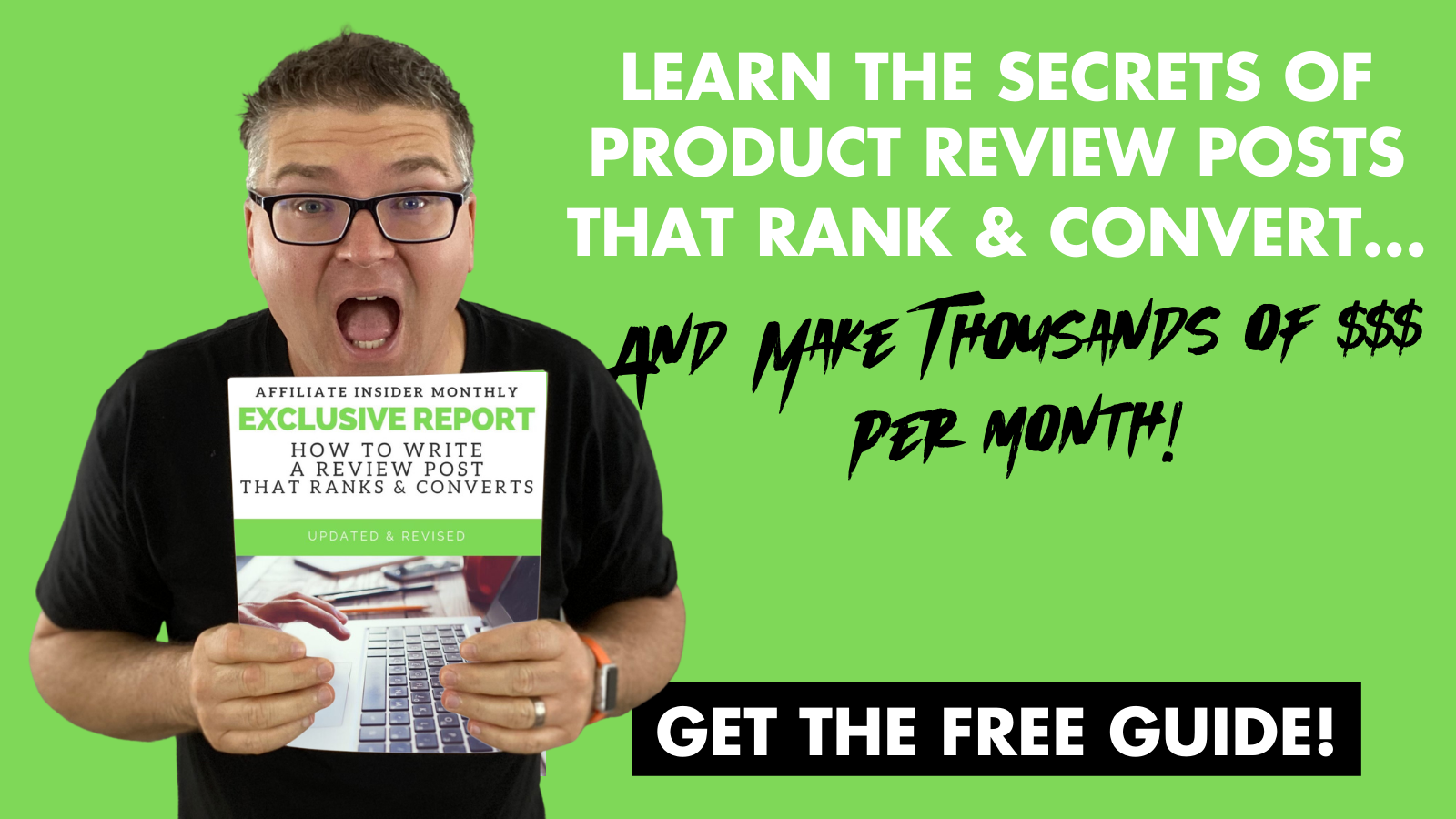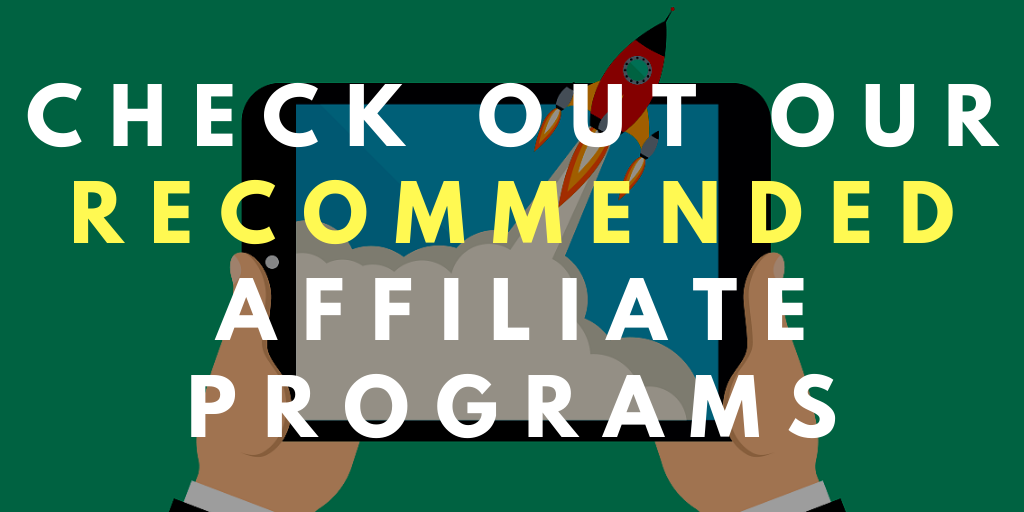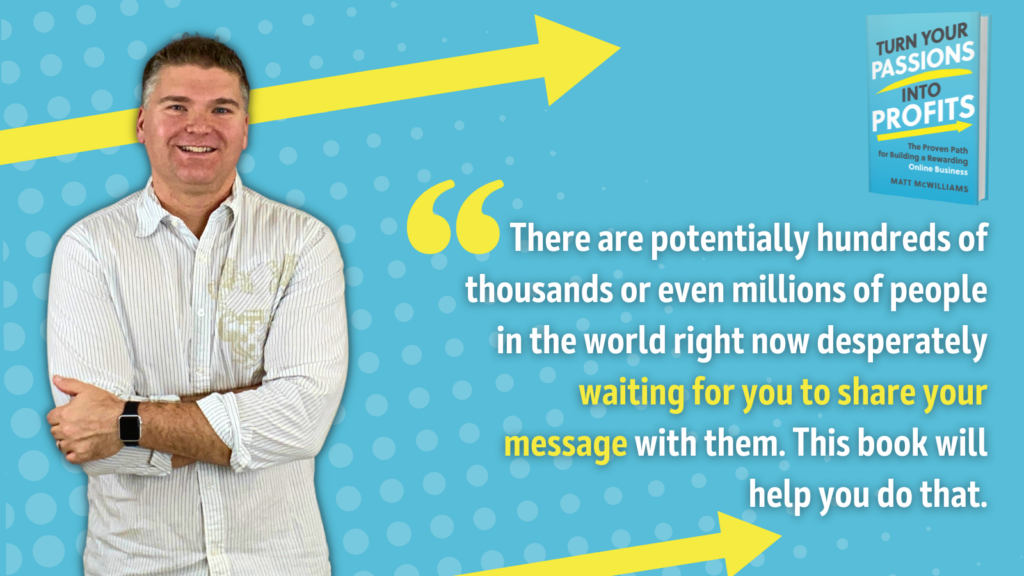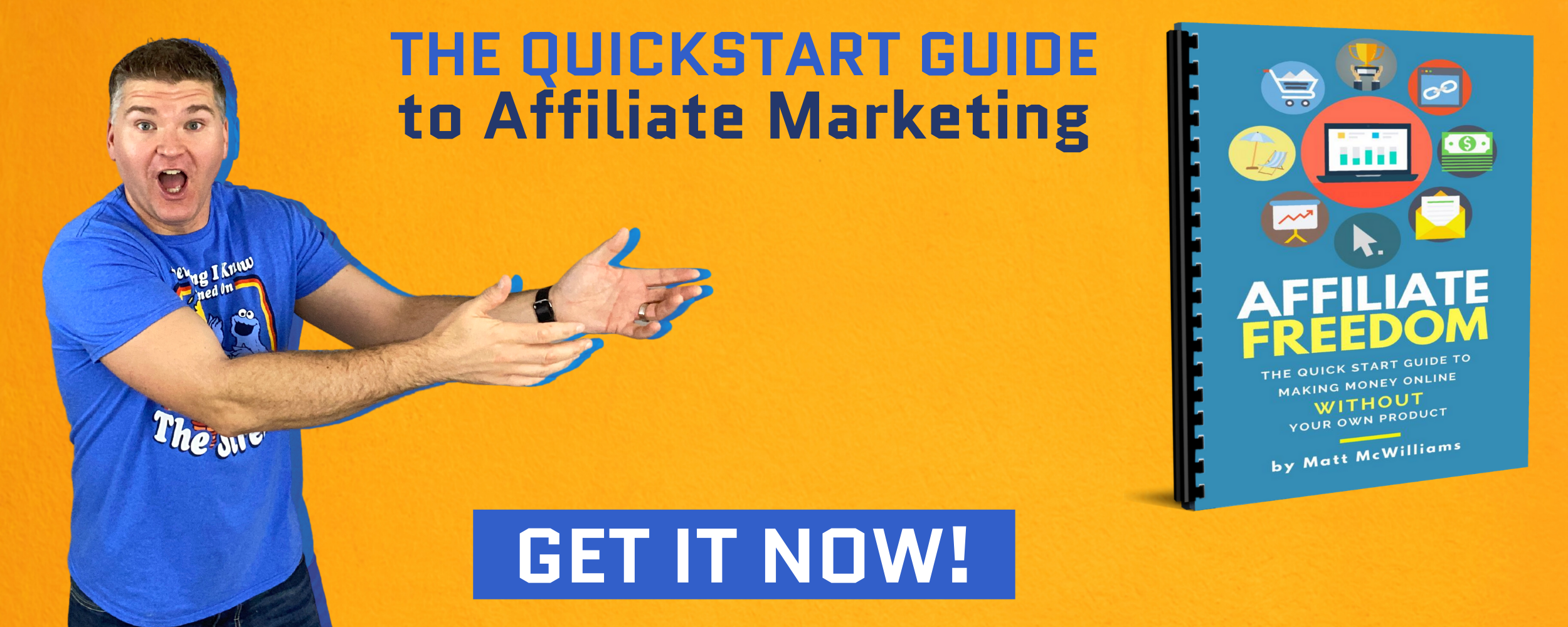Are you tired of making the same affiliate marketing mistakes over and over again? In today’s episode, we’re diving headfirst into the world of affiliate marketing blunders and how to avoid them like a pro. This episode is not all doom and gloom though. Because I’m not just here to point out the problems – I’m also going to share my best tips and strategies to steer clear of these pitfalls and set yourself up for affiliate marketing success. Let’s jump in and discover how to sidestep the most common affiliate marketing mistakes!
Click Here for The Written Transcript of This Episode
Want to learn how to make passive affiliate income from product review posts? Get my free guide on how to write a review post that ranks and converts and learn how we bring in more than $10,000 every single month in passive affiliate income! Get it here!
LINKS MENTIONED IN THIS EPISODE
Ultimate Guide to Holiday Affiliate Promotions
Top Affiliate Program Mistakes
Text me at 260-217-4619
Don’t Miss An Episode – Subscribe Below
Previous Episodes of The Affiliate Guy
How to Attract Affiliates with the Right Commission
How to Build Your Personal Brand and Become a Celebrity in Your Niche with Rory Vaden
Why Your Affiliate Program is Failing (And What to Do About It)
How to Build Strong Relationships with Your Affiliates
How to Avoid the Most Common Affiliate Marketing Mistakes
Are you tired of making the same affiliate marketing mistakes over and over again? Well, in today’s episode, we’re diving headfirst into the world of affiliate marketing blunders and how to avoid them like a pro. This episode is not all doom and gloom though, because I’m not just here to point out the problems.
I’m also going to share my best tips and strategies to steer clear of these pitfalls and set yourself up for affiliate marketing success. So let’s jump in and discover how to sidestep the most common affiliate marketing mistakes.
Let’s get started. So I’m not here to be a parent, but I am going to tell you up front like we all make mistakes. Every one of these mistakes that I’m going to share with you today, I have made, and I know at least ten others who’ve made these same mistakes as well.
Okay, mistakes are fine as long as we learn from them. So that’s why today we’re going to dive into some of the most common affiliate marketing mistakes that I see so many of us fall victim to it and then more importantly, want to talk about how to avoid them.
Now, the mistakes, I’m going to break these up into six parts here. The first part is these are mistakes in kind of the basics, right? Choosing the right products, choosing the right niches. The second part is mistakes in content creation and promotion.
Part three is mistakes in link management. Kind of a boring topic, but an important one to cover. Part four is mistakes that are really around affiliate program selection, selecting the wrong programs.
Then part five is mistakes in building and nurturing those relationships. And then lastly, mistakes in mindset. So again, six parts with anywhere from 2345 mistakes in each of these parts.
So let’s jump in with part one. So this is Mistakes in choosing the right Products and Niches. The first mistake I just see this so often, is falling for the hype.
Falling for the hype. It’s so easy to get caught up in the hype. When you see a new product launch, you see a new so and so’s they’re doing an affiliate program and so you want to be a part of it.
The problem with this is if you don’t do the research, you end up letting the excitement cloud your judgment. And so if you just rush into promoting a product without doing the proper research, number one, you could end up in a situation where just because somebody famous or a big company makes a product doesn’t mean it’s a good product and you end up disappointing your audience. They buy it goes well, but now they don’t trust you for the long term.
And so I asked a friend of mine one time he asked about a specific offer and he knew he could make about $30,000 promoting this thing versus about $20,000 promoting something else. And I said, okay, here’s my question though. Is this going to best serve your audience?
And he went on to explain why it wasn’t. And I said, okay, you’re going to make $10,000 more. And that’s awesome.
In that month, he promotes about one affiliate offer a month. In that month, he’s going to make $10,000 more. And I don’t want to dismiss that.
He’s not a multimillionaire, but he makes about a half million dollars a year. $10,000 is still a lot of money. That is a really nice vacation.
That is a really sweet, like, week long vacation at a pretty nice place. So I don’t want to dismiss $10,000. There’s a lot you can do with that.
That’ll pay for like a week of college. In all seriousness, it’ll pay for a lot. It’s a third of a pretty decent car, if I’m not mistaken.
There’s a lot that $10,000. And I was like, that’s awesome. But long term, if you sell this and it doesn’t go well, how much are you going to lose over the course of the next, just look at one year?
It could cost you $50,000 to $100,000. So you may not notice it because it means only a few people less are going to buy each time, but it means that next promo that would have made you 25,000 is only going to make you 20,000. And the next one instead of 20 is only going to make you 17.
And over time, you’re going to lose a lot more money than you made. So rushing into this, promoting your product without doing the proper research can not only fail when it doesn’t resonate with your audience, but it can fail if it’s not a great product, if it’s not going to serve your audience. So you need to look at things and do the research, maybe go through the course or use the product and study the competition and see those things.
So don’t fall for the hype. The second thing is kind of ties in. If you ignore your audience’s needs, if you ignore your audience’s preferences, you’re going to fail.
I mean, your audience is the heart and soul. The heart and soul, ultimately of anything with building a platform. The heart and soul of my podcast is you, the listener.
The heart and soul of my emails, of the content I put in my emails, is the people on my list, individuals on my list. That’s why I never say my list. It’s like I don’t refer to them as my list.
It’s individuals on the list. They are people. The heart and soul of social media is the people who follow you, and your audience is the heart and soul of everything affiliate marketing related.
If you don’t understand their needs and preferences, you can end up promoting some products that just do not align with them. So survey them, engage with them. I like to periodically.
I don’t do nearly as many as I used to, but I like to periodically just engage with them. Maybe get on Zoom and talk to them for ten minutes, and I’ll coach them through a specific situation. What I’m giving is the coaching.
What I’m getting is learning more about them. And we can do these things even just asking a simple question. Maybe it’s just one question.
Ask one question and get 500 responses. You will learn a lot so that you understand what they’re looking for. This is the importance, again, of connecting with your audience.
That’s one of the reasons why at the end of every episode, I invite people to text me 260-217-4619, by the way. One of the reasons why I do that yes, it is to serve. Please don’t misunderstand me.
I want you to text me if you’ve got questions. Big takeaways from the episode. All the stuff that I always say at the end of each episode.
But I get as much out of it because I’m learning what you really need. What problems are you having? What struggles are you facing?
What obstacles are you encountering? And I learn this stuff, and that helps me to refine my avatar. Speaking of avatar, by the way, go grab our Avatar creation guide.
It’s free. Go to mattmcwilliams.com/avatar. And you will avoid a lot of these problems on the front end. If you actually decide who your audience is, you’ll avoid this.
The third mistake I see here in this kind of part one here, choosing the right products and niches, choosing too many products at once, I get it. There are so many opportunities out there. But promoting too many products at once, not only can it confuse your audience, but it can confuse you.
And you’re going to go we’ll talk about this later. But you’re going to go half in on three things. Half in on three things doesn’t equal all in on one, believe it or not.
Looking for some good affiliate programs to promote? Check out our recommended affiliate programs here!
You think, well, half plus half plus half. Last time I checked in, math class was 1. 5 not in affiliate marketing. So the key here is start with one product, start with one promotion, and really hone in on that one. Work through all the kinks like we’ll talk about in this episode.
The things like creating a promo plan and things like that. Work through the kinks with that one. Now, if you’re more advanced, yeah, promoting two things in a very short period of time is totally doable.
But this is a mistake I just see so many people make. They’re like, okay, I’m going to do affiliate marketing. And what they think is promoting 20 things in 60 days is better than promoting three things in 60 days, and it’s usually not.
Now, I’m not saying you only need to promote one thing for 60 days. I’m saying promote one thing for a week or two and then move on to the next thing, and then the next thing.
The fourth mistake here is not paying attention to seasonal trends. Seasonal, what is the word I’m looking for? Ebbs and flows within product sales. Not paying attention to demands, not paying attention to just the trends that are going on that aren’t necessarily seasonal.
Every year we release an update. The Ultimate Guide to Holiday Affiliate Promotions. And I’ll link to that in the show notes.
And this is specific to promoting things in the last five, six weeks of the year, when for some industries, that’s 50, 60, 70% of their sales. For people who are in niches where seasonal things matter more, that can make or break your entire year. And if you ignore those trends and if you ignore what’s going on, you end up ignoring those spikes in demands and commissions.
So pay attention. Are there any seasonal shifts? And then you want to tailor your content and promotions accordingly.
I always ask with clients whether we’re running their affiliate program or if I’m going to be promoting something as an affiliate, “Hey, are there any just bill built in spikes? And a lot of people will say, well, we’re pretty much even for eleven months out of the year, but we spike in January with New Year’s resolutions.”
Okay, that’s good to know. Or they’ll say, yeah, we spike when the kids get out of school a little bit, or we spike when the kids are going back to school, or yeah, we have a little bit of a bump around Mother’s Day and Father’s Day.
Some industries, it’s not as pronounced. Obviously, if you’re in the health and fitness industry, 50% of your entire year can come in January. We know that if you’re in a gift industry, 50, 60% of your entire year can come from right before Thanksgiving through about December 23.
We know that stuff. Some of them, it’s a little bit less pronounced, but we have one particular client where about 20% of their sales comes in one month of the year. And you go, okay, well, that’s not a huge thing.
Well, I mean, 80% of their sales come in eleven months of the year and 20% in one. That is noteful we have to take advantage of that if we’re going to run a promotion. It makes sense to run it then, because if we can increase sales so if we were going to make, say, let’s just say they were going to do $100,000 in that month or in that one month, right?
If we can increase sales in that month by 20%, we’re at 120,000. It’s a pretty big increase to go up $20,000 versus 20% in the other month might only produce $12,000 increase or so. So we focus our efforts around that month and you need to know that as an affiliate.
All right, the second part is common mistakes that are really around content creation and marketing promotion. The first one not having a plan.
Whatever you do, create a plan and stick to it long enough to find out what works. So go grab our affiliate Promo plan guide. Go grab that mattmcwilliams.com/Promoplan, go grab that guide. That’ll walk you through how to create a promo plan.
And the big mistake here is not that you don’t follow the plan perfectly, but that you don’t even have one, and you’re literally trying to make it up as you go. What I find is typically we’ll tweak the plan anywhere from 10 to 40%, but that means at least 60% is planned in advance. I know what I’m going to be sending via email each day.
I know what we’re doing social media wise. I know what we’re doing at such and such a point. And even if I decide to tweak it, I at least have a starting point for that.
So not having a plan is a huge mistake. The solution there is have a plan, go grab the template, mattmcwilliams.com/Promoplan. We’ll put that in the show notes, go grab that and then use it.
The second mistake is low quality content. You’ve all heard the expression, content is king and quality matters, right?
We see this so often, is we put in all this effort into our own stuff, whether it be the podcast or our own writing, our own emails, our own blog posts, our own sales copy, our own sales pages and videos, and then we pack it in on an affiliate promotion. We just take the swipe, copy and copy it, and send it.
Do not do that. That’s not what Swipe copy is for. Or we see so many people, they’re like, I’m going to create a review post, and then it’s just stuffed with keywords, there’s no value, and things like that.
Or I’m going to kind of take what they give me and post generic images on social media. Is that what you normally post? Do you normally post kind of mediocre images on social media?
Or do you post really good ones? Are you always posting selfies and then all of a sudden when you do a promotion, you’re giving them some sort of you’re posting a banner ad. Basically, that doesn’t work.
So think about this. How do you put the same effort into your affiliate promotions as you do the content you’re creating for your own stuff? How do you make it feel the same?
How do you make it stay on brand and not just be kind of mediocre keyword stuff, reviews, ugly images that don’t fit your brand, things like that. Take the time. Take the time to make it seem as close to your own stuff as you normally would do.
Another mistake here is just not taking advantage of multiple content formats. Oh, well, I’m going to send three emails, okay? I’m only going to do social media.
Well, that doesn’t work. We’ll talk about this later when I talk about going all in. But you got to do everything.
Use your podcast, use social media, use video, use your blog, use your email, and reach different people. I have people that follow me on social media that are not on my email list. I have people on my email list that don’t follow me on social media.
I have people that I text with, mentioned that earlier, that I text with that are not on my email. They’re not on my email list. The reality is, only half the people in my audience listen to this podcast.
Why can’t just abandon the other half? That’d be ridiculous. So I want to talk about affiliate offers on all content formats that I can.
I probably admittedly I don’t use the podcast enough. So here’s a news flash. Maybe over the next year I’m going to do one or two more episodes where I talk about an affiliate product.
I’ve got to do that. It’s the smart thing to do for me. And it’ll be good content of course, we’ll make it really positive content, something you get value out of.
Another big mistake here is just not following basic SEO best practices. All right? SEO is search engine optimization. If you don’t know that, it is so important. And so if you’re going to write a review post, you need to be updated on SEO trends.
You need to optimize your content. We’ve got the guide. We’ve got a review post guide that we’ve updated, I don’t know, every six months for the past five, six years.
We keep it updated with the latest SEO trends and all that stuff. So if you want to go grab that and you should go grab the reviewpost guide, mattmcwilliams.com/reviewpost. We will link to that in the show notes as well. So go grab that and you will know how to optimize for the search engines.
It basically shows you how do you rank high on Google for certain product reviews and convert. That’s the important thing. If all you do is rank high we talked about this keyword stuffing.
And whatnot if all you do is rank high but the content reads terribly, you’re not going to convert into sales. And if all you do is have a great converting post but it’s on the second page of Google. Nobody’s going to see it.
The tree falls in the forest. Nobody’s there to hear it. Does it make a sound?
So we want to go grab that guide. Make sure you do. I’ll put the link in the show Notes for that.
All right, last mistake here, not thinking about mobile. Guys, how much of the Internet do you access on your phone versus computer? I know for me, it’s actually pretty low.
I’m on the low end because I’m an Internet marketer, so I prefer to use my double monitor. Well, triple monitor now, triple monitor setup. And the keyboard. I don’t like typing with my thumbs and yada yada. But the reality is most people are accessing the Internet on their phone. And I can’t tell you how many times I’ve made this mistake.
We created a great page, we’ve done blah, blah, blah. Looks great on desktop. Boom. Let’s roll with it. Oh, crap. Two days later oh, guys, this looks horrible on Safari on my phone. Oh, yeah, we forgot to do the mobile part. Oops. Don’t make that mistake.
Make sure you always check in mobile. I like to use a tool called browsershots. It’s free.
I think it’s browsershots.org. I’m not looking at it right now, but I’m pretty sure just Google browsershots and you can see what your page looks like in hundreds of different browsers.
Now, what I do is I check the top five and I make sure because I’ve got whatever I don’t even know what kind of phone I have. I know it’s an apple. It’s an iPhone. That much I know. Where is it? Let’s see.
So my phone is an Apple. It’s iPhone 14, and it’s got whatever the latest iOS is because I just updated it the other day. Okay, so because of that, I know what it looks like on mine, but what does it look like on an Android using Chrome?
What does it look like on an iPhone nine? I don’t necessarily care what it looks like on an iPhone six, because that is like 0. 1% of the population. But what does it look like five generations ago on Safari? What does it look like on the bigger ones?
What are they? This is the pro. I think they’re called the whatever. Plus, I’m not like one of those smartphone nerds. I don’t even know what the new one is. It’s probably like something, but the bigger ones, the Max, that’s what they’re called, I think.
What does it look like on there? Does it look a little bit different? What does it look like in the sideways mode, landscape mode?
What does it look like that? You need to know those things because sometimes it can really look awful, and if it does, well, you need to fix that. So that’s part two.
Part three is about link management. See, there’s mistakes in link management here. The first one is using your ugly affiliate link, all right?
This is the simplest one. If you use the long ugly affiliate link, that’s like isrefer comrefid equals and blah as your ID and a bunch of other stuff, and it just looks ugly. It’s a turn off, it appears spammy.
So here’s the thing. Use pretty link. I will put a link to it in the show notes. You don’t need to pay for the paid version, just use the free version. That’s all I’ve ever used because it’s all I’ve ever needed. And you use this.
And now you have to remember I said earlier, mattmcwilliamc.com/promoplan redirects to an ugly affiliate or not affiliate link, but an ugly link that’s got a bunch of stuff in it.
But I can also say, mattmcwilliamc.com/ClickFunnels that redirects to my ugly ClickFunnels affiliate link. mattmcwilliamc.com/ConvertKit redirects to my ugly ConvertKit link.
And the other reason I love this is you can change links on the fly. So if let’s just say ConvertKit, they switch affiliate systems and my link changes. I just go in one place.
Ready to turn your passions into a profitable business? Check out my new book here!
I don’t have to change it in 200 podcast episodes. I don’t have to change it on 14 YouTube videos and 17 blog posts. I change it in one place, the Pretty link plugin in WordPress, and it changes everywhere.
What if I’ve talked about this probably like 400 episodes ago? What if I decide, hypothetically, two years from now, I no longer want to promote ConvertKit? It could happen.
I love them, I think they’re the best. But let’s just say they change something and I’m like, no, I want nothing to do with them. I can’t stand them.
I’m going to change. Now what I do is I create a page that says, I no longer recommend this product. And here’s why, and I go through the reasons.
Now, I recommend such and such product, I go into Pretty Link and I change that link. So I’m not going to use ConvertKit as the example, but it’s like if I’m promoting whatever and then I switch it now instead of that link going nowhere, it doesn’t go nowhere. It goes to a page that explains, “Hey, you watched me talk about this in a video and I said all these nice things, but now we’re going to recommend this other thing.”
The next mistake is a big one, and we talked about this two episodes ago, not disclosing affiliate relationships. Clearly the FTC has released new guidelines. You have to be transparent.
That’s a big part of building trust with your audience. If you fail to disclose, not only are you going to be in legal hot water, but you’ve also really lowered your credibility and your trust. So go listen to that episode.
It was just two episodes ago about the new FTC guidelines. I won’t belabor that point here. Then the third one is not tracking what works.
Not tracking what works. Make sure you are tracking different links that you use in different places and look at the results. Make sure that you don’t just use one affiliate link for email and social media, use a different link.
Use pretty link. So you could say these are not real links, for the record. But if I was promoting, let’s just say I’m going to promote a widget and we’ll call it the XYZ Widget.
That’s the name of the company, XYZ Widget. I’m going to have XYZ Widget, and that’s going to be what I use on the podcast because it’s easy to remember. But on social media, I might just do like XYZ Widge or XYZ Co, and then an email. You don’t see the link. We hyperlink it, so it could be anything. But I’ll still have it tracked differently.
And then in the back end of the system, in the affiliate system, if I’m able to some systems don’t allow you to do this. There are some pretty lame systems out there, but if you are able to track it differently, set up a different tracking parameter in the affiliate system, a lot of times you just have to append the URL, like ClickFunnels and InFusionsoft, first promoter, other systems, WP, Affiliate Post, Affiliate Pro, all those allow you to append the link.
And now I know, okay, I got 42 sales from Instagram and 71 from email, and only two from Twitter and one from Facebook. Just as an example, and hypothetically, this is probably not going to be the case, but I got zero from the podcast. Well man, I spent a lot of time on the podcast.
I wasted a lot of time on there and didn’t even make any sales. How would I know that instead of just, oh, I made 120 sales? Where did they come from? I don’t know. You have no idea. So you can get as granular as you want.
You could use a separate link for each email and so you could actually tell, wow, I promoted the webinar and I got 100 people to register and I made ten sales. And then from there on all the other emails I sent, I only made seven sales. So I made ten from the webinar, seven from everything else.
What does that tell you? Maybe you learn a lesson that wow, maybe I need to promote the webinar more. Because if I’d gotten twice as many people to go to the webinar, I could have made 20 sales from that and maybe I wouldn’t even had to do anything else.
I don’t know. You’ll learn these things. So track what works, use data, and focus on what brings the best results.
Part four is all about mistakes in program selection. The first mistake here is just promoting kind of scammy, unreliable programs. I sort of touched on this earlier, but like Google the affiliate program, if somebody has said something bad about the affiliate program, it’s probably easy to find.
And just because one person, two people said something bad, especially if there’s a huge affiliate program, don’t worry about that. But if there is a wholesale bad mouthing of an affiliate program, you might want to not join. You might want to just avoid it.
So read reviews on their program. Read reviews about the company that they get. stars out of five are people complaining about the customer service.
And it’s not just the product’s mediocre, but it’s like their customer service is rude. Do you want to be associated with that? So make sure you take time to look that up and see how companies rate.
The second big mistake here is just not reading the terms and conditions. Guys, I see this so often, like the devil is in the details. I see this so often with affiliates.
They don’t read the terms and then they do something that gets them into hot water and they didn’t know. Some companies allow trademark bidding. Some companies don’t.
Necessarily. I’m agnostic about that because sometimes it’s a good idea and sometimes it’s a bad idea. But here’s the thing. I’m going to enforce the terms, though. If I recommend to the program that they not allow it, I’m going to enforce it. So you need to know that.
You need to know when do you get paid? When do you get paid? Because for budgeting purposes, if you’re going to go, say, spend $1,000 on ads, be nice to know if it took 60 days to get paid.
I don’t think you should take 60 days to get paid as an affiliate program, okay? But if you do, if that’s what that affiliate program does, you just need to know that. So know the terms.
Take the time to read the terms, read the rules and ask them like, “Hey, is there anything I need to know? Ask the affiliate manager. Is there anything I need to know about promoting this? What am I allowed to do and not do?”
And then the last mistake here is this goes kind of against what I said earlier, but sticking to a single program. Yeah, I said promote one, but not for freaking ever.
Do not limit yourself to just one affiliate program or even two. Diversification is important. So diversify. Look for different programs. Look for different products. Look for different price points.
Look for different if you’re promoting courses, try to have some things like gender diversity in there. If you have a diverse audience my audience is 50 50, literally. It’s like 51 49 female.
If you got an audience that’s 99% male, you don’t need gender diversity, let’s be honest. But maybe you need diversity in some other things in the sense of you’re always promoting just supplements. Well, how about a course?
Or you’re always promoting just exercise. Well, how about diet? You’re always promoting just time management.
How about something else in the productivity niche and venture out a little bit. Find some things that are a little bit outside of your niche and see how you do with those. One of my favorite affiliate programs is Blake Brewer’s program.
It’s called Legacy Letter Challenge. Blake teaches people how to write a legacy letter, so it’s only for parents, but how to write a letter that would outlive you. And it’s kind of like that thing that you want to live forever from you to your children.
And he teaches people how to do that. And it is done well in you think, oh, that’s the parenting niche. Yeah, it’s done great in the parenting niche, but it’s also done well in the personal growth niche. It’s done well in the entrepreneur niche. And so reach out a little bit. Try some things.
If you’re interested in promoting Blake, by the way, send me a text. Just shoot me a text at 260-217-4619. I will introduce you to his affiliate manager and you can promote Blake because he’s got a great webinar.
It converts really well. But my point in there is, like, we did a webinar with Tom Woods recently, did over 100 sales. Tom’s not in the parenting niche, but he was like, you know what, that might resonate with my audience.
Let’s try something there. Part five here is just mistakes in building and nurturing those relationships. The first one is neglecting your email list.
I’m not saying that this is a super common mistake, but I see it a lot. People get to a certain level, their list is a certain size, and then it just gets smaller week after week or even doesn’t even have to be a big list, but they get to a point where I can make a couple of next thing you know, it’s down to 1900, 1800 and so on. So if you help growing your list, check out List Launch Challenge.
I’ll put a link to that in the show notes. But my point here is do not neglect your email list. Once you build it, keep it growing even.
I mean, I tell people all the time, I’m fine if we grow by one 10th of 1% a month. I just want to grow. I just want it to be a little bit bigger the first of next month than it was the first of this month.
To get started with affiliate marketing the right way, download my free quickstart guide to affiliate marketing. Grab your copy here!
That’s all I care about. And then I want to obviously make sure that I’m not letting them go cold. That’s why we have a system.
Like you’re going to get at least two emails a week from me, depending upon how you’re tagged and segmented and what offers you’re interested in all that, you could get more, but we’re consistent. You’re going to get two a week at least.
Questions?
Text me anytime at (260) 217-4619.
Or…check out some of my free reports to help you get on the right track:
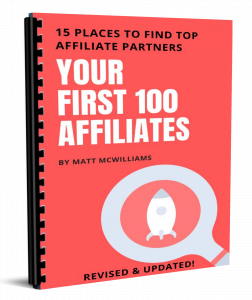 |
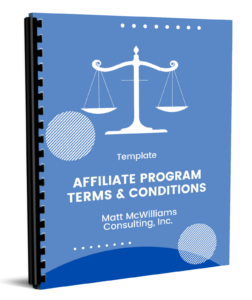 |
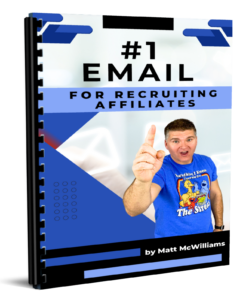 |
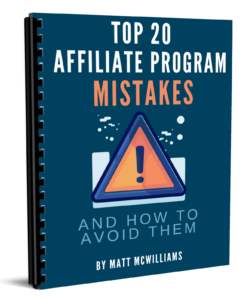 |
 |
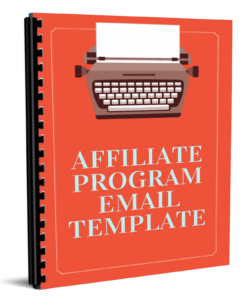 |
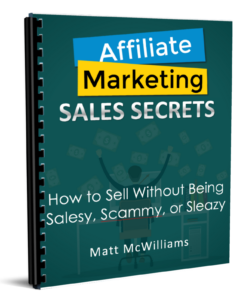 |
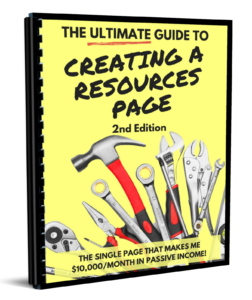 |
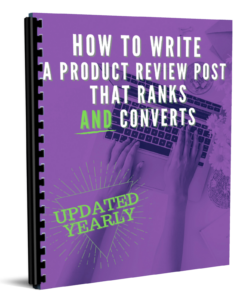 |

